List of titles and honours of the British Monarch
This list of titles and honours of the British Monarch details the current and former titles of the sovereign of the United Kingdom of Great Britain and Northern Ireland, and its predecessor states.
The present United Kingdom was formed in 1922 when the United Kingdom of Great Britain and Ireland, which had been formed in 1801 from the Kingdom of Great Britain and the Kingdom of Ireland, was partitioned to create the Irish Free State. The Kingdom of Great Britain was itself formed in 1707 from the Kingdom of England and the Kingdom of Scotland. England and Scotland had been in a personal union since 1603, while Ireland had been in a personal union with the Kingdom of England since the elevation of the Lordship of Ireland to the status of a kingdom in 1542. Wales was gradually conquered by England in the Middle Ages, beginning with the Norman invasion of Wales and concluding with the conquests of Edward I in 1277-83. Wales was legally incorporated into England between 1535 and 1542 by King Henry VIII.
The medieval monarchs of England also controlled large parts of France, particularly under the Angevin kings. Several of the listed titles are therefore French, many held as fiefs of the French Crown rather than independently. Also represented is the English claim to the France, maintained for over 400 years before being dropped after the French Revolution.
While the English claim to France was not seriously pursued after the Middle Ages, later monarchs did hold foreign titles. When William III became King alongside his wife Mary II, he maintained his Dutch titles. The Georgian kings ruled as Electors and Kings of Hanover, as well as holding the office of Arch-Treasurer of the Holy Roman Empire. These titles lapsed when Queen Victoria succeeded to the throne.
While the British Empire only gave the monarch one significant new title, that of Emperor of India, its transformation into the Commonwealth of Nations and decolonisation created many new independent states, each with a separate monarchy. The British monarch was initially the sovereign of all these states, but many subsequently declared themselves republics and abolished their monarchies. Of the thirty-two realms Elizabeth II became queen of on her accession in 1952, only sixteen retain her as their monarch. All current and former Commonwealth realms are listed below.
Titles held by the monarch of the United Kingdom
Kingdoms
Lordships
Non-hereditary titles
Religious titles
- Defender of the Faith — first granted to Henry VIII in 1544 by the Parliament of England to replace the Roman Catholic title revoked by Pope Leo X.
- Supreme Governor of the Church of England — replacement for the title Supreme Head of the Church of England, introduced by Elizabeth I.
Military Titles
The monarch is always the Commander-in-chief of the British Armed Forces. Additionally, Queen Elizabeth II is the Colonel-in-chief (patron) of the following regiments:
- The Blues and Royals (Royal Horse Guards and 1st Dragoons)
- The Royal Scots Dragoon Guards (Carabiniers and Greys)
- The Royal Lancers (Queen Elizabeth's Own)
- The Royal Tank Regiment
- Grenadier Guards
- Coldstream Guards
- Scots Guards
- Irish Guards
- Welsh Guards
- The Royal Regiment of Scotland
- The Duke of Lancaster's Regiment (King's, Lancashire and Border)
- The Royal Welsh
- Corps of Royal Engineers
- Royal Regiment of Artillery (styled Captain-General)
- Adjutant General's Corps
Commonwealth Realms
These Kingdoms are independent of the British Crown, but are held in personal union with the United Kingdom and follow the same rules of sucession. Monarchies listed under 'Queen' have only had Elizabeth II as their sovereign, and are thus yet to have a reigning king. Date indicates the year the monarchy was established.
- King of Canada — 1931
- King of Australia — 1942
- King of New Zealand — 1947
- Queen of Jamaica — 1962
- Queen of Barbados — 1966
- Queen of the Bahamas — 1973
- Queen of Grenada — 1974
- Queen of Papua New Guinea — 1975
- Queen of the Solomon Islands — 1978
- Queen of Tuvalu — 1978
- Queen of Saint Lucia — 1979
- Queen of Saint Vincent and the Grenadines — 1979
- Queen of Belize — 1981
- Queen of Antigua and Barbuda — 1981
- Queen of Saint Kitts and Nevis — 1983
Customary Titles
These titles are used by custom in their respective areas, but are not formally held by the monarch.
- Duke of Lancaster — used in historic Lancashire to reflect the ownership of the Duchy of Lancaster by the monarch separately from the Crown Estate.
- Duke of Normandy — used on the Channel Islands to reflect their status as the remnants of the Duchy of Normandy controlled by the Kings of England. The role of monarch of the islands is separate from that of the United Kingdom, but there is no specific title for their sovereign.
Titles formerly held by British Monarchs
The following titles include those held by the monarchs of the predecessor kingdoms to the United Kingdom, and titles formerly used but now abolished.
Kingdoms, Empires and Equivalent
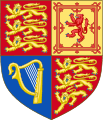
.svg.png)
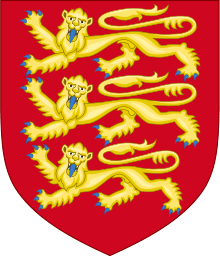
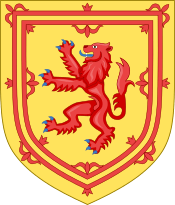
.svg.png)
.svg.png)

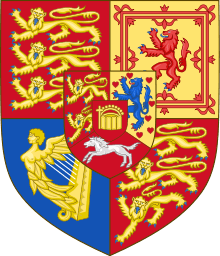

Principalities
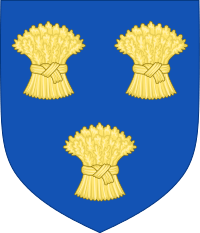
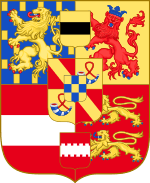
Duchies
Electorate
.svg.png)
Counties
- Count of Anjou — held from the King of France by Henry II and Richard I.
- Count of Ponthieu — held from the King of France by Edward II and Edward III. Inherited from Eleanor of Castile, wife of Edward I.
- Count of Montreuil — held from the King of France by Edward II and Edward III. Inherited from Eleanor of Castile, wife of Edward I.
- Count of Boulogne — held from the King of France by Stephen.
- Count of Nassau — held by William III
Lordships
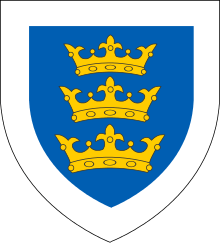
Religious Titles
- Defender of the Faith — granted by Pope Leo X to Henry VIII for his book Defense of the Seven Sacraments, and revoked in 1530 at the beginning of the English Reformation.
- Supreme Head of the Church of England — title used by Henry VIII and Edward VI to reflect their status as head of the English Church.
Offices of the Holy Roman Empire
Commonwealth Realms
These Kingdoms were independent of the British Crown, but were held in personal union with the United Kingdom and followed the same rules of sucession. Monarchies listed under 'Queen' only had Elizabeth II as their sovereign, and thus never had a reigning king. Dates indicate the year the monarchy was formed and the year of its dissolution.
- Monarch of the Irish Free State/Ireland — 1931-37 (in practice), -1949 (legally)
- King of Ceylon — 1948-72
- King of India — 1947-1950
- Queen of Fiji — 1970-87
- Queen of the Gambia — 1965-70
- Queen of Ghana — 1957-60
- Queen of Guyana — 1966-70
- Queen of Kenya — 1963-4
- Queen of Malawi — 1964-6
- Queen of Malta — 1964-74
- Queen of Mauritius —1968-92
- Queen of Nigeria — 1960-63
- King of Pakistan — 1947-56
- Queen of Sierra Leone — 1961-71
- King of South Africa — 1931-61
- Queen of Tanganyika — 1961-62
- Queen of Trinidad and Tobago — 1962-76
- Queen of Uganda — 1962-3
Titles held by the heir apparent of United Kingdom
The following are the titles usually granted to the heir apparent, though most must be granted by the monarch and are not assumed automatically. Other titles have seen sporadic use, such as Edward III granting his heir Edward, the Black Prince the title Prince of Aquitaine.
Principalities
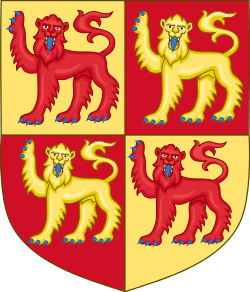

Duchies
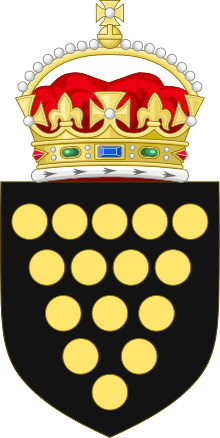
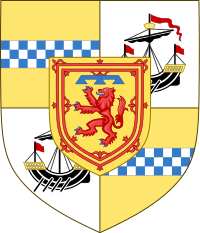
Earldom
- Earl of Chester — title of the heir of the Kingdom of England.
- Earl of Carrick — title of the heir of the Kingdom of Scotland.
Baronial and Lordships
- Baron of Renfrew — title of the heir of the Kingdom of Scotland.
- Lord of the Isles — title of the heir of the Kingdom of Scotland.